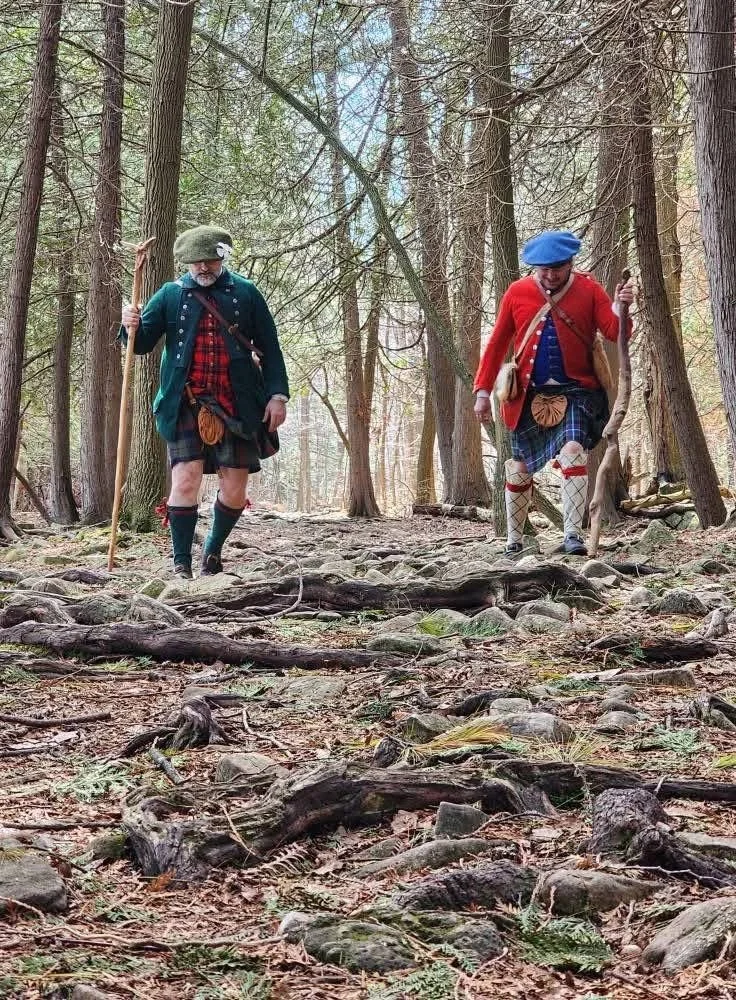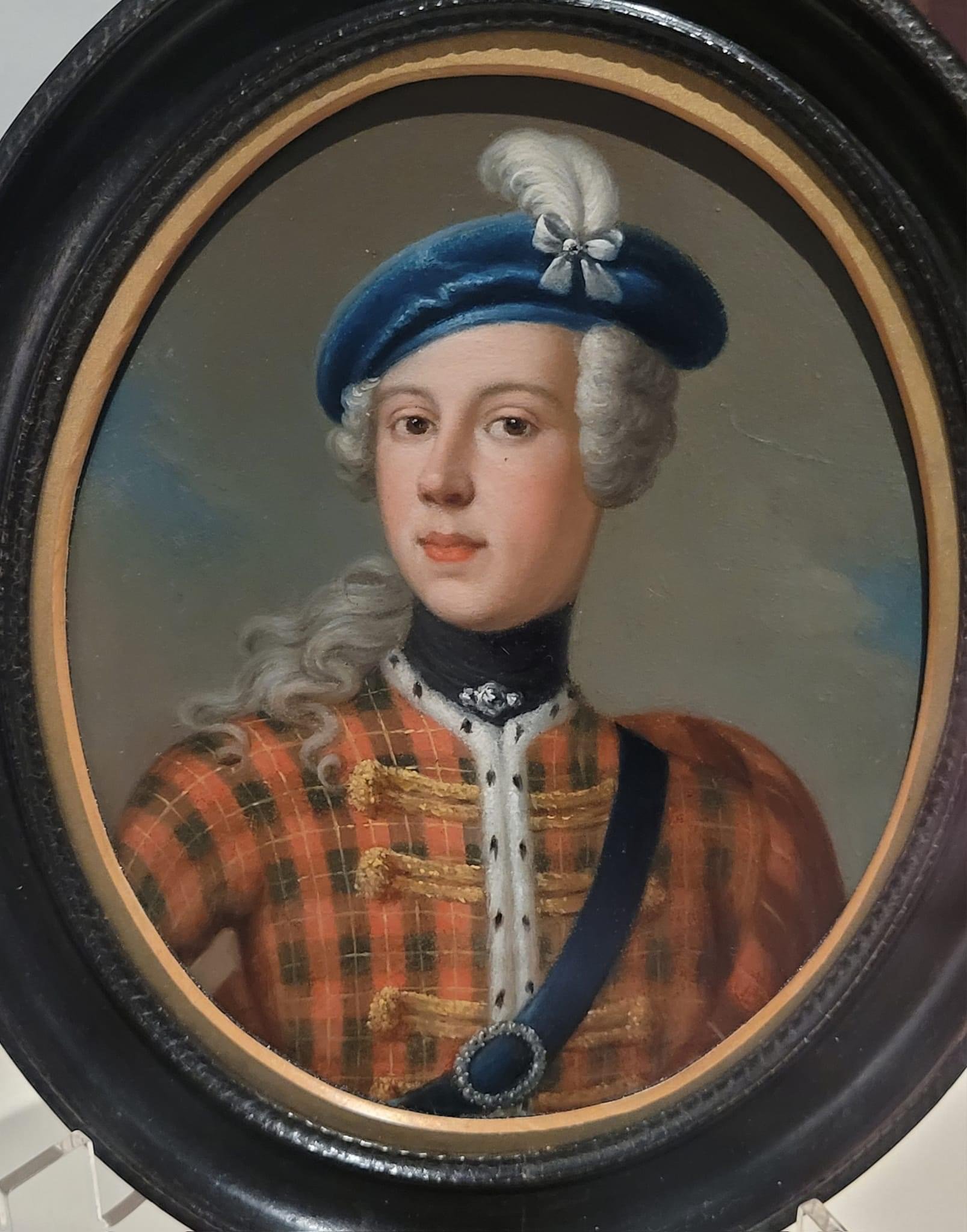Bonnie Prince Charlie’s bonnet
Or A Closer Look at a Prince’s Bonnet: Reflections from a Knitter’s Perspective
On Friday I had the rare and humbling privilege of holding a bonnet believed to have been worn by Prince Charles Edward Stuart—“Bonnie Prince Charlie”—during the ’45 Rising. It’s an object that I have long admired from behind the glass of a museum display case at the West Highland Museum, but to finally examine it up close, to turn it gently in my hands, was a moment I won’t soon forget.
The bonnet in its case at West Highland Museum. Photo copyright author.
This was part of my ongoing work with Threads of History, a project by Làmhan (aka me) focused on studying garments linked to Prince Charles Edward Stuart within Scottish museum collections. The goal is not just to catalogue or preserve these items, but to deeply understand how they were made, what they meant, and who might have made them. We will then publish our work, and if there’s enough demand we will also create patterns so that members of the public can make their own garments inspired by the prince’s clothes.
My dear friend Rick and his pal Tryg in bonnets I made for them. Photo taken recently by Sara Maria Lopez in a Wisconsin wood
Naturally, I approached the bonnet from a knitter’s perspective. Having knitted over a hundred bonnets inspired by 17th- and 18th-century examples, I’ve come to appreciate the subtleties that construction reveals. Through a knitter’s eye, objects begin to speak differently. You notice choices: how a crown was shaped, how decreases were arranged, what kind of yarn was used and how it handled felting. These details often go unnoticed in standard object descriptions, yet they offer so much insight.
This particular bonnet was truly striking. The yarn was extremely fine—much finer than what I’ve encountered in other museum-held bonnets, many of which were made in Scotland. It reminded me very much of merino, with a softness and smoothness that sets it apart. It made me wonder whether the piece might have been knitted by a (male) master knitter in France—something entirely plausible given the prince’s time abroad. What’s certain is that it was made by an expert, and expertly wet-felted too. It is a luxurious object, one absolutely fit for a prince.
The linen thread visible on the bonnet still.
There were other intriguing clues left behind. A few stitches of white linen thread still remain in place—one set just beside the cast-off edge, where it appears a cockade may have once been sewn on. These are subtle traces, but incredibly telling. More puzzling still are a few stitches left right at the top of the crown. I can’t quite figure out what they once secured. A satirical print from 1745 depicts the prince wearing a bonnet with a plume of feathers on top—and while satire isn’t always reliable as evidence, I now find myself wondering whether there might have been some truth in that image. Could a feather have once adorned the top of the bonnet? Something akin to what modern clan chiefs wear, though positioned differently?
The bonnet in this miniature painting might not be too far from what the prince actually wore during the ‘45… [Image of a miniature painting of the prince, Duleeph Singh Collection, Inverness Museum and Art Gallery]
These small details raise big questions. Despite its size, this bonnet is a richly complex object, and there is still so much to uncover. As I examined it, I felt as though I was having a quiet conversation with the original knitter—someone whose name we may never know, but whose hands left behind clear traces of skill, intent, and even personal habit. Fascinatingly, some of the techniques and decisions they made are the very same I find myself making when knitting my replicas. That resonance across time was deeply moving.
I have since bought some fine merino weaving yarn and will be doing a series of experimental knits and felting tests. The idea is to return to the museum with these samples in hand and compare them directly to the original, to get even closer to understanding how this remarkable piece was made.
This is why I do this work. Through the threads, fibres, and techniques, we find a way to connect with the past—not just through dates and names, but through the quiet, deliberate labour of hands long gone.
You can follow more of our research and discoveries through Làmhan’s Threads of History project here.





